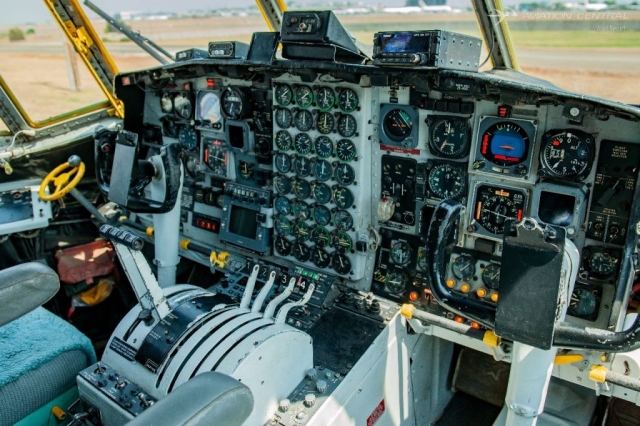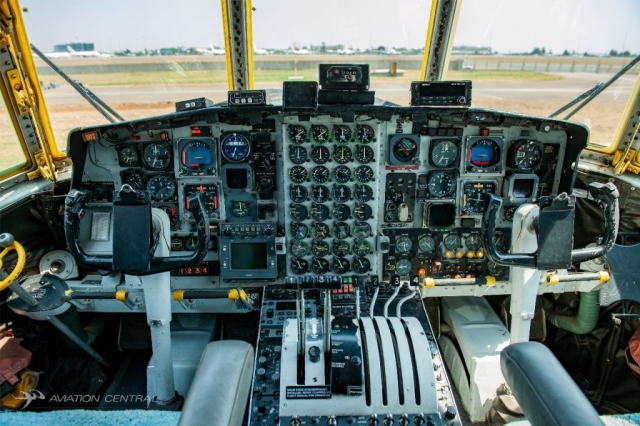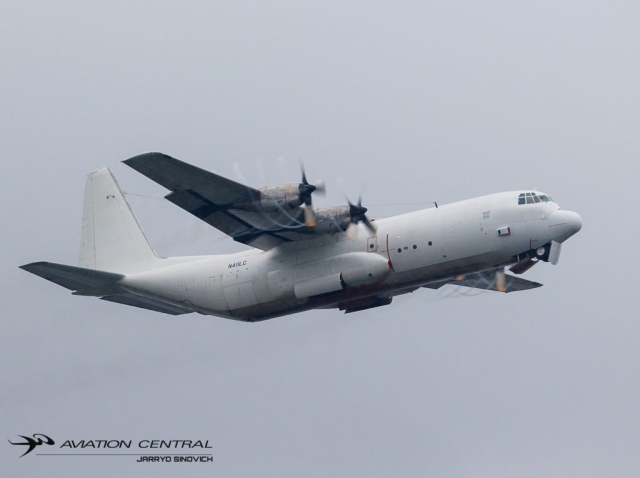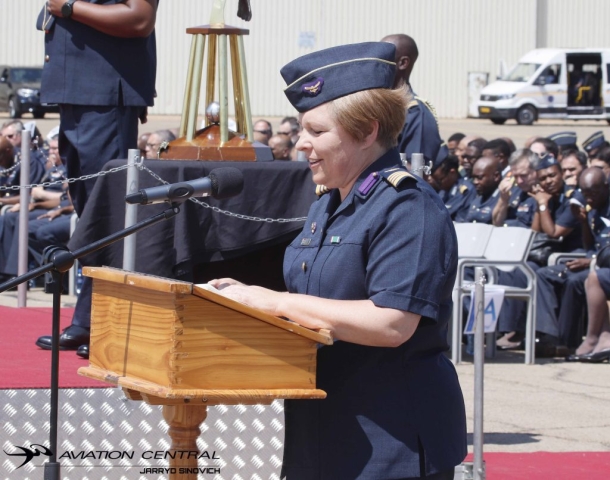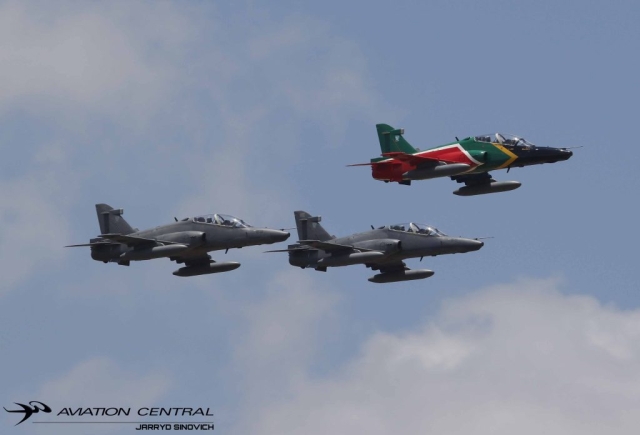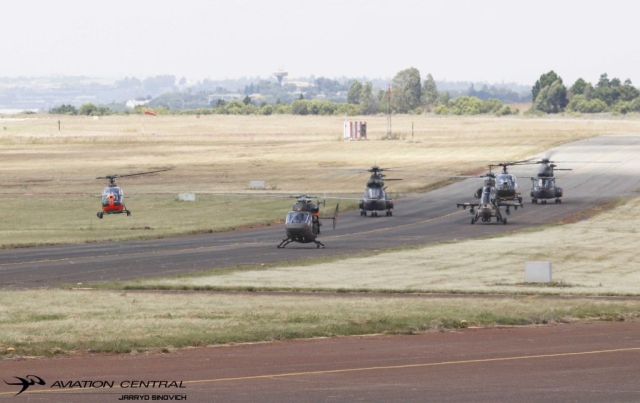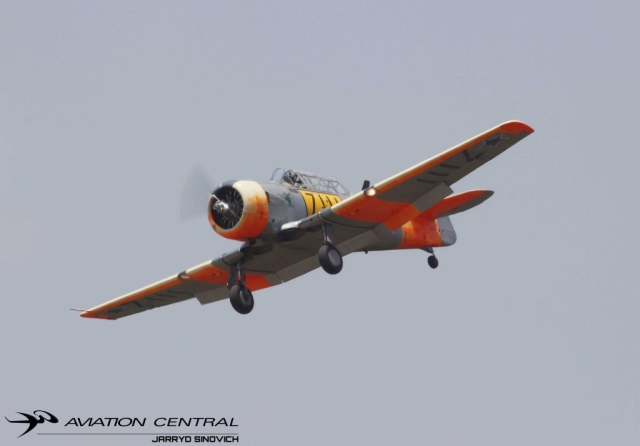Tag Archives: Aviation industry
Czech aircrew completes Marine-Led training ahead of aircraft delivery
Members of Marine Light Attack Helicopter Training Squadron (HMLAT) 303 and the H-1 Light/Attack helicopters program office (PMA-276), recognized a group of airmen from the Czech Republic Air Force during a ceremony on Feb. 9 for completing maintenance and flight training on the H-1 family of the aircraft.
The students have been embedded with the HMLAT-303 since July 2022, taking the same courses and hands-on training utilized by the U.S. Marine Corps’ military occupational specialties (MOS) for the AH-1Z Viper and UH-1Y Venom. The syllabus is designed to provide the initial knowledge, skills, and experience required to maintain, operate, and fly the H-1 platform.

“The training we did with the Czechs provided the foundational knowledge to fly and maintain these machines [AH-1Z and UH-1Y],” said Lt. Col. Mark Koval, Commanding Officer, HMLAT-303. “They now have the basic skills to transition to tactical training with their own fleet of helicopters.”
In 2019, the Czech Republic selected the H-1, specifically four AH-1Z and eight UH-1Y aircraft, to modernize the country’s armed forces and strengthen its homeland defense. As part of the foreign military sales contract, the customer had the opportunity to send its first wave of H-1 aircrew and maintainers through the HMLAT-303 training pipeline, preparing them for aircraft deliveries throughout 2023.

The training syllabus included familiarization, navigation, ordnance, formation, night vision goggle, terrain and instrument training. In addition, maintenance students completed training with the Center for Naval Aviation Technician Training Detachment Camp Pendleton, Ca.
“This training is part of our larger efforts to ensure the Czech Republic Air Force has all of the tools and resources required to fly its new aircraft for decades to come,” said Col. Vasilios Pappas, PMA-276 program manager.
Once back in country, the H-1 crew will continue training, working with representatives from the H-1 original equipment manufacturer, Bell, and their supplier, Pinnacle Solutions. Based on a “train-the-trainer” model, pilots, crew chiefs and maintainers will learn the final skills required to operate and sustain its fleet of AH-1Z and UH-1Y helicopters, and train other members of its force.
The Czech Air Force squadron is expected to be independently operating in late-2024.
“We are committed to the success of our customer in their deployment of the H-1 platform and grateful to HMLAT-303 for their role in that success story,” said Pappas.
PMA-276 manages the end-to-end procurement, development, support, fielding and disposal of the Marine Corps rotary wing close air support, anti-armor, armed escort, armed/visual reconnaissance and fire support program systems.
Norwegian Air Ambulance expands its H145 fleet
The Norwegian Air Ambulance is ordering two five-bladed H145s to be used for life-saving missions in Norway.
“I would like to thank the Norwegian Air Ambulance for its continued trust in our helicopters to support their essential, life-saving missions,” said Thomas Hein, Head of Europe Region at Airbus Helicopters. “We’re proud that they are further expanding their fleet of five-bladed H145s.”
“The five-bladed H145 has proven to be the perfect helicopter for our HEMS operations,” said Leif Olstad, CEO of the Norwegian Air Ambulance. “With the new helicopters we will continue to serve the people of Norway with state of the art equipment to ensure the best service possible.”
Today, Norwegian Air Ambulance operates all 13 HEMS bases in Norway using a 100% Helionix-equipped fleet of H135s and H145s. The organisation’s mother company, the Norwegian Air Ambulance Foundation, was the first operator in the world to take delivery of a
five-bladed H145 in 2020.

The new version of Airbus’ best-selling H145 light twin-engine helicopter adds a new, innovative five-bladed rotor to the multi-mission aircraft, increasing the useful load of the helicopter by 150kg (330 lbs.). The simplicity of the new bearingless main rotor design also
eases maintenance operations, further improving the benchmark serviceability and reliability of the H145, while improving ride comfort for both passengers and crew.
In total, there are more than 1,600 H145 family helicopters in service, logging a total of more than seven million flight hours. Powered by two Safran Arriel 2E engines, the H145 is equipped with full authority digital engine control (FADEC) and the Helionix digital avionics suite. It includes a high performance 4-axis autopilot, increasing safety and reducing pilot workload. Its particularly low acoustic footprint makes the H145 the quietest helicopter in its class, while its CO2 emissions are the lowest amongst its competitors.

Airbus Helicopters is the leading provider of helicopters to the air medical transport industry, providing some 54% of the 2,700 EMS helicopters flying in the world today.
Lockheed Martin And Royal Bahraini Air Force Celebrate Bahrain’s First F-16 Block 70
Bahraini, American and Lockheed Martin officials today celebrated the first F-16 Block 70 for the Royal Bahraini Air Force today at Lockheed Martin [NYSE: LMT] in Greenville, South Carolina.
The Kingdom of Bahrain has a unique history with the F-16: It was the first F-16 operator in the Gulf Cooperation Council beginning in the early 1990s, and now is receiving the first F-16 Block 70.
“Today’s ceremony GREENVILLE, S.C., March 10, 2023 represents the next generation of the powerful and proven legacy of the F-16, and demonstrates Lockheed Martin’s commitment to advancing this program and getting this much-needed aircraft and its advanced 21st Century Security capabilities to the warfighter,” said OJ Sanchez, vice president, Integrated Fighter Group, which includes the F-16 program. “With the Block 70 iteration, we are transforming 4th generation for the next generation for the Royal Bahraini Air Force and other partners and allies around the world.”

This F-16 Block 70 jet is the first of 16 jets for Bahrain, and took its first flight on Jan. 24, 2023. From here, it will begin additional flight tests at Edwards Air Force Base before arriving in Bahrain in 2024.
Six countries have selected Block 70/72 aircraft. In addition to the current official backlog of 127 jets to-date to be built in Greenville, Jordan has signed a Letter of Offer and Acceptance (LOA) for 12 jets and Lockheed Martin has received a contract to begin its long-lead activities. Bulgaria has also signed an LOA for an additional eight jets for its fleet. Once these are finalized, the backlog will increase to 147.
“The F-16 celebrated today was built by our talented, committed workforce in Greenville,” said Danya Trent, vice president, F-16 Programs and Greenville site leader. “We are proud to call Greenville the global home of the F-16 and look forward to continuing to produce jets serving missions around the world.”
The Spanish Air Force Buys Another 16 PC-21s & Associated Simulators
The Spanish Air Force, Ejército del Aire, decided to purchase 24 PC-21s in early 2020. The final PC-21 of this order was delivered to Spain in mid-2022. The Spanish Air Force has now decided to buy another 16 PC-21s. The contract signed with the Dirección General de Armamento y Material (DGAM) makes Spain the largest PC-21 operator in Europe.
Spain is convinced by the PC-21: since summer 2022, its future military pilots have trained with the world’s most advanced training system by Pilatus. After a very professional negotiation phase, the Spanish Air Force has now ordered another 16 PC-21s to reinforce pilot training with additional Pilatus trainer aircraft. The training bandwidth of the PC-21 will also be enlarged: in future, the PC-21 will also be used for elementary training in addition to basic training.

Lieutenant Colonel Ildefonso Martínez-Pardo González, Academia General del Aire (AGA) Air Operations Group Commander, commented as follows: “Now in use with the Spanish Air and Space Force for over 18 months, the PC-21 integrated training system far exceeds our expectations. Its reliable and efficient powerplant, aerodynamics, safety systems and avionics make the PC-21 a highly versatile trainer, capable of performing any phase of flight training from the most elementary to the most advanced. Our relationship with Pilatus has been outstanding throughout, and a key factor for successful implementation. The excellent collaboration, professionalism and teamwork of everyone involved over the past three years have enabled us to roll out this PC-21 training course in record time without interruption to training.”
PC-21 & Simulators
14 PC-21s will be delivered to the Academia General del Aire (AGA) in San Javier. An additional two PC-21s will also be delivered to the Centro Logístico de Armamento y Experimentación (CLAEX). These two PC-21s will be used for experimental, flight test training and research and development activities. The aircraft will be based in Torrejón near Madrid. The package also includes a PC-21 simulator, two cockpit procedure trainers, additional mission planning and debriefing systems as well as pilot training software.
Markus Bucher, CEO of Pilatus, said on the occasion of the contract signing ceremony: “What could be better than a customer who buys again from to Pilatus! Spain is an extremely renowned, professional air force. As such, Spain’s decision is a testimony to the capabilities of our training system. It is the most advanced, most efficient training system available on the market!”

André Zimmermann, VP Government Aviation at Pilatus, added: “Over the last few years, we have built an excellent relationship with the Spanish customer and are now very pleased to help them enhancing their training skills with this follow-on order of PC-21 aircraft and associated Ground Based Training Systems. This proves once again that Pilatus is producing and delivering first class products to satisfy the high requirements of our customers.”
PC-21 – the most efficient training system
With ever growing pressure on air force funding, the completely newly developed PC-21 offers a highly efficient, intelligent platform for training jet pilots. To meet all expectations, the PC-21 has extremely high equipment and performance features. They enable the single-engine turboprop to perform a range of missions previously reserved exclusively for jets. The PC-21 is far more cost-effective and fuel-efficient to operate than a jet trainer. Experience with existing PC-21 customers shows that with the Pilatus Training System, the cost of training a future military pilot can be reduced by over 50 percent.
Africa Sees General Aviation Success with Versatile Bell 429
Bell Textron Inc., a Textron Inc. (NYSE: TXT) company, announced the delivery of a Bell 429 and a signed purchase agreement for another Bell 429, both to customers in Africa.
The Bell 429 is a popular choice for the African market and continues to demonstrate important qualities such as safety, reliability, and performance. The aircraft also offers a smooth, peaceful ride as well as a spacious and customizable cabin depending on mission type.
“We are proud to support our customers in Africa with the Bell 429. With two now operating in South Africa and a third one soon to be operating in West Africa, the aircraft continues to excel across the many market segments for which it was designed. Featuring state-of-the-art technology to provide enhanced safety, comfort, performance and most importantly reliability, we are confident that these aircraft will help support on whatever their missions entail,” said Sameer Rehman, managing director, Africa and the Middle East, Bell.

Caverton Helicopters Limited in Cameroon signed a purchase agreement for the first oil and gas configured Bell 429 in West Africa. Caverton Helicopters is a subsidiary of the Caverton Offshore Support Group Plc (COSG), which is a fully integrated offshore support company providing aviation and marine logistics services to businesses operating in the oil and gas industry in Nigeria and across West Africa.
“Having operated a variety of Bell products across our operations over the years, we are excited to continue with this brand, which is synonymous with safety and excellent performance,” said Captain Bello Ibrahim, managing director, Caverton Helicopters. “Introducing the Bell 429 into our fleet is an exciting milestone for us and will enable us to provide the best support for our oil and gas clients across the continent.”
The newly delivered 429 will be used for corporate transportation. Thanks to its large cabin, impressive speed, and modern technology, proving critical to its operators, there are a variety of configurations available, enabling the platform to perform numerous missions ranging from energy to law enforcement and public safety.
With more than 602,000 global flight hours, there are now 430 Bell 429 in operation, more than 20 of which are in the Middle East and Africa.
Last SAFAIR L100 leaves SA
On a cold and wet Saturday the 11th February saw SAFAIRs last Lockheed L100 Hercules leave South African soil for the very last time. This particular L100 will join the fleet of Lynden Air Cargo. Lynden Air Cargo is an American cargo airline based in Anchorage, Alaska, USA. It operates scheduled services and on demand charter, international and domestic flights, including services for the US military. Its main base is Ted Stevens Anchorage International Airport.

(SAFAIR) Safair Operations as it is known today was established in 1965. At the time it was known as Tropair (Pty) Ltd and was a general aviation charter company. In 1970 the company name changed to Safair Freighters (Pty) Ltd when the company was purchased by Safmarine and the new entity began operations on 18 March 1970. Its primary client in the 1980s was the South African Defence Force.

The company operated the largest fleet of L100 aircraft in the world. Humanitarian Aid and Relief operations has always been Safair’s “niche” market. Safair assisted aid and relief agencies such as the United Nations, World Food Programme, and the International Committee of the Red Cross in delivering much needed humanitarian aid to stricken regions on the African continent as well as other areas in the world where such assistance was required.
The L100-30 left with the new November registration of N411LC and its previous South African registration was ZS-OPS. She was built in 1978 as a Lockheed L-100-30 Hercules (L-382G) C/N 382-4799).

Lockheed L100 Speculations
Aircraft Configuration Possibilities/Operation
Flat floor/wooden floor
Roller system
Fuel Burn : ± 2700 litres per hour
300 kts maximum cruise speed
Seating capacity of up to 90 passengers on airline type seats *
Bulk liquid transport – up to 24 000 litres (fuel)
20 000 kg for more than 1 200 nautical miles
Short field landing and take-off capability
Aerial delivery of food and medicine (Air drops)
Transportation of sea containers, large vehicles/trucks, oversized cargo
External fuel tanks for increased range

Combination of freight and passengers
Wingspan 40.41m (132 ft 7″)
Length 34.37m (112 ft 9″)
Height 11.66m (38 ft 2″)
Maximum certified take-off weight 70 307kg (155 000lbs)
Maximum certified landing weight 61 235kg (135 000lbs)
Maximum certified zero fuel weight 57 727kg (127 000lbs)
Basic empty weight 34 545kg (76 000lbs)
Average APS weight 35 000kg (77 000lbs)
Landing Requirements
The maximum landing weight for the Hercules L100-30 is 135 000 lbs (61 235kg). At this weight the following landing distances are required.
Airfield Elevation Runway Length (zero wind)
Sea Level 4 800 ft
1 000 ft 5 000 ft
2 000 ft 5 200 ft
3 000 ft 5 300 ft
4 000 ft 5 500 ft
5 000 ft 5 700 ft
[02/11, 20:46] Neil Swart: Cargo compartment…
[02/11, 20:46] Neil Swart: Length 17.07m (54 ft)
Width 3.02m (10 ft 3″)
Height 2.74m (9 ft 3″)
Cubic capacity 140 cubic meter (excluding ramp)
Floor height (above ground) 0.99-1.04m (3 ft 3″-3 ft 5″)
Cargo floor Aircraft can be supplied with either a flat metal floor, a wooden floor or an adjustable roller system
In 2013, Safair created a low-cost carrier subsidiary called FlySafair. They currently operational with the first flight having taken place on 16th October 2014. FlySafair operates passenger flights between Cape Town, George, Gqeberha, Johannesburg, Lanseria, Durban and East London. This is the companies primary focus now and moved away from cargo operations!
Western Cape AMS Mountain Rescue during International Sailplane Grand Prix
A foreign gliding competition pilot participating in the African leg of the International Sailplane Grand Prix was rescued from high up a Western Cape mountain after his sailplane crashed (Wednesday, 23/1/25). Speaking from his bed in the hospital, he said that he was very fortunate to survive the close call and thanked the professional and efficient rescue coordinated by the South African ARCC (Aeronautical Rescue Coordination Centre).

It is understood that the pilot got into difficulties overhead the mountains West of Villiersdorp and was able to put the fixed-wing glider down on a steep slope some distance below the top of the peaks. Fellow pilots (also participating in the competition) that saw the crash raised the alarm with Air Traffic Control, which in turn activated the ARCC. This information and the location sent by the pilots’ onboard satellite tracking device, which pinpointed the exact crash location, assisted in guiding the Western Cape Department of Health EMS/Air Mercy Service (AMS) rescue helicopter directly to the scene.

With no level terrain to land at the scene, a Provincial EMS paramedic and MSAR Rescue Climber were hoisted down by the helicopter to the wreckage. The pilot (who was conscious and managed to provide additional information via phone) was extracted from the wreckage and hoisted in a stretcher into the helicopter.
He was flown to a Villiersdorp sports field, where Western Cape Metro EMS, SAPS Rescue, Overberg Metro Rescue management, and SAPS Villiersdorp assembled to prepare and secure a landing zone for further treatment and remain available should further resources to support the first team be required.

Several other resources, including SARZA and K9 was also on standby. The pilot was admitted to Christiaan Barnard Memorial Hospital with lower back injuries. He commented, “under the circumstances, I feel surprisingly well; I had what felt like at least 1 million guardian angels helping me”.
He remarked that his survival is in no small part due to the cockpit of the Jonker sailplane that he was flying protecting him during the crash. Jonker Sailplanes is a proudly South African company that designs sailplanes for local and international markets (in fact, all the sailplanes participating in this leg of the International Sailplane Grand Prix were manufactured by Jonker manufactured).
The scene has been handed to the SAPS and SACAA AIID (Accident and Incident Investigations Division) for further investigation.
The South African ARCC is the legally mandated function (South African Maritime and Aeronautical Search and Rescue Act No.44 of 2002, as amended) that coordinates all aviation search and rescue-related occurrences in South Africa. The ARCC reports to SASAR and the Department of Transport. Under international aviation agreements and ICAO regulations, the South African ARCC is responsible for aviation incidents extending South of South Africa across the international waters in the Southern Oceans down to the South pole. The Mountain Club of SA, along with many other emergency response organisations, is a dedicated SAR Unit to the ARCC.
Photos: ARCC Supplied, Brent Russell, FAI Sailplane Grand Prix

SAPS Johannesburg air support operations receives a boost with new H125 Airbus Helicopter
The National Commissioner of the South African Police Service (SAPS), General Fannie Masemola has officially handed over a brand new H125 airbus helicopter to the Division: Visible Policing and Operations to bolster the organisation’s crime combatting efforts.
The newly procured H125 airbus adds to the SAPS existing fleet of helicopter’s across the country whose aim is to provide air support in crime prevention operation’s as well as Search and Rescue (SAR) missions.
Speaking during the handing over ceremony held at the Grand Central Airport in Midrand, General Masemola says resourcing and equipping the SAPS operational environments remains a top priority for the SAPS.

“This helicopter came at the very right time when we are entering the peak of our festive season operations, there is work out there cut for its size. We continue to resource our visible and operational response environment with vehicles and other resources to strengthen our crime combatting efforts. For now, this helicopter will be based in Gauteng to bolster crime combatting operations”, said General Fannie Masemola.

The SAPS Airwing unit consists of aircrafts and helicopter’s which are responsible for policing operations ranging from routine patrols to Search and Rescue (SAR) operations, to support operations for high risk units which include the Special Task Force (STF), the Counter Assault Team(CAT), the National Intervention Unit (NIU), Tactical Response Teams (TRT) and the Public Order Police (POP) units. They also provide Operational Support during public unrests and crowd control operations, Vehicle, Stock as well as Game Theft Operations.

They mainly focus on tracking and tracing suspects in high risk incidents such as Cash-In-Transit(CIT) heists, Armed Robberies, Hijacking’s and a host of other serious and violent crimes.

Police officers who are deployed to work on board are called Airborne Law Enforcement Officers (ALEO). Apart from providing air support to specialised teams on the ground, these members are trained in assisting SAPS pilots with observations and also reading of aerial maps.
Pilatus Delivers First PC-12 NGX to Tradewind Aviation
Tradewind Aviation accepted delivery of their first PC-12 NGX during a ceremonial handover at the Pilatus US subsidiary in Broomfield, Colorado. The delivery marks the first of twenty PC-12 NGXs to be delivered to Tradewind’s headquarters in Oxford, Connecticut, over the next five years.
Pilatus and Tradewind Aviation executives gathered to celebrate the milestone at Rocky Mountain Metropolitan Airport. David Zipkin, Tradewind co-founder and Chief Marketing Officer, shared: “We’re thrilled to take delivery of the first of twenty brand-new PC-12 NGX aircraft. Tradewind is the largest US operator of Pilatus PC-12s for private charter, and these new aircraft will further expand our ability to grow and serve our clients with the very best flight experience. The PC-12 NGX provides the perfect balance of efficiency, comfort and superior performance for shorter flights and hard-to-reach destinations, allowing our clients to save precious time and focus on what’s most important to them.”

Pilatus’ most advanced single-engine turboprop, the PC-12 NGX, will join Tradewind’s fleet of PC-12s, further expanding their private charter options throughout North America and the remote islands of the Caribbean.
Pilatus Business Aircraft Ltd’s President & CEO, Thomas Bosshard stated: “The PC-12 continues to lead the industry as the global fleet approaches 2,000 aircraft and ten million flight hours. The demand remains very strong among new and returning customers looking to upgrade. Our customers, especially fleet and charter operators, value the PC-12 NGX’s reliability, performance and elevated passenger experience. We are pleased to celebrate this ceremonial delivery with Tradewind, and look forward to commemorating their future growth and success.”

Eric Zipkin, Tradewind Aviation co-founder & President, added: “I am proud of all that the team at Tradewind have been able to accomplish in the past 20 years. From humble beginnings with a single plane, we have grown to a fleet of 23 and a team of over 220, firmly establishing Tradewind as the leader in so many premium markets, including the Northeast and Caribbean. The continued investment in, and expansion of, our Pilatus fleet is evidence of Tradewind’s continued growth and increased demand for private charter and we are thankful to our loyal guests and team for making this possible.”


















